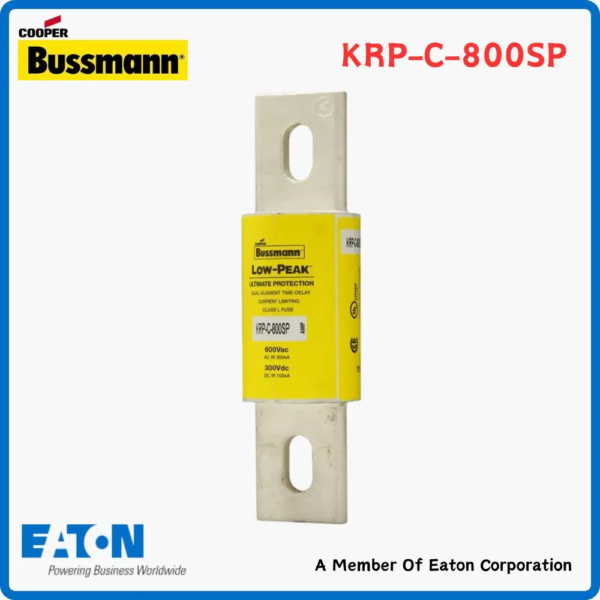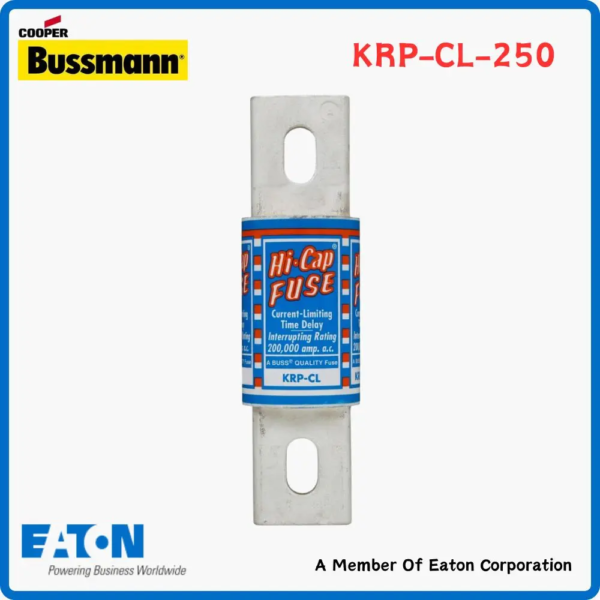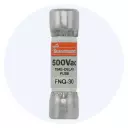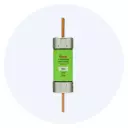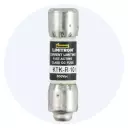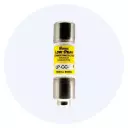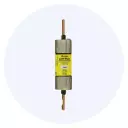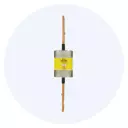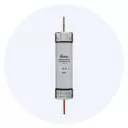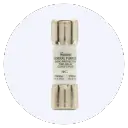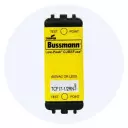Bussmann FNQ Fuses
Eaton Bussmann FNQ-1/8 Low Voltage Fuse
Rated 5.00 out of 5In stock
$16.74EachSKU: FNQ-1/8Weight 0.175 lbs Dimensions 0.01138889 × 0.01138889 × 0.04166667 yd Brand Eaton Bussmann
Eaton-Bussmann, with its headquarters in St. Louis, Missouri, is a division of Eaton Corporation that specializes in the production of circuit protection products. These products are designed for use in the electrical, electronic, and automotive industries, both domestically and on a global scale. The company boasts a strong manufacturing network with facilities located in three domestic and six international locations, reflecting its commitment to serving customers worldwide. With a team of approximately 3,000 employees, Eaton-Bussmann is well-positioned to meet the ever-evolving needs of its customers in the electrical protection industry.
Eaton stands as a forward-thinking leader in power management, focused on enhancing lifestyles and safeguarding the planet. Leveraging the worldwide momentum of electrification and digital innovation, they propel the global shift towards renewable energy, addressing pressing power management issues on a global scale.Product type Low Voltage Fuse
Voltage 500 Volt
Eaton Bussmann FNQ-R-1/10 Low Voltage Fuse
Rated 5.00 out of 5In stock
$11.33EachSKU: FNQ-R-1/10Weight 0.175 lbs Dimensions 0.01138889 × 0.01138889 × 0.04166667 yd Brand Eaton Bussmann
Eaton-Bussmann, with its headquarters in St. Louis, Missouri, is a division of Eaton Corporation that specializes in the production of circuit protection products. These products are designed for use in the electrical, electronic, and automotive industries, both domestically and on a global scale. The company boasts a strong manufacturing network with facilities located in three domestic and six international locations, reflecting its commitment to serving customers worldwide. With a team of approximately 3,000 employees, Eaton-Bussmann is well-positioned to meet the ever-evolving needs of its customers in the electrical protection industry.
Eaton stands as a forward-thinking leader in power management, focused on enhancing lifestyles and safeguarding the planet. Leveraging the worldwide momentum of electrification and digital innovation, they propel the global shift towards renewable energy, addressing pressing power management issues on a global scale.Product type Low Voltage Fuse
Voltage 500 Volt
Bussmann WCF Fuses
Bussmann FCF Fuses
Eaton Bussmann Series UL Class CF, FCF 1RN Fuse
Rated 5.00 out of 5In stock
$79.99SKU: FCF1RNBrand Eaton Bussmann
Eaton-Bussmann, with its headquarters in St. Louis, Missouri, is a division of Eaton Corporation that specializes in the production of circuit protection products. These products are designed for use in the electrical, electronic, and automotive industries, both domestically and on a global scale. The company boasts a strong manufacturing network with facilities located in three domestic and six international locations, reflecting its commitment to serving customers worldwide. With a team of approximately 3,000 employees, Eaton-Bussmann is well-positioned to meet the ever-evolving needs of its customers in the electrical protection industry.
Eaton stands as a forward-thinking leader in power management, focused on enhancing lifestyles and safeguarding the planet. Leveraging the worldwide momentum of electrification and digital innovation, they propel the global shift towards renewable energy, addressing pressing power management issues on a global scale.Product type Fuse
Voltage 600 Volt
Bussmann FRS Fuses
Bussmann HEB-AA Fuse
Eaton Bussmann HEB-AA Inline Fuse Holder
Rated 5.00 out of 5In stock
$18.99SKU: 504-HEB-AA-2Brand Eaton Bussmann
Eaton-Bussmann, with its headquarters in St. Louis, Missouri, is a division of Eaton Corporation that specializes in the production of circuit protection products. These products are designed for use in the electrical, electronic, and automotive industries, both domestically and on a global scale. The company boasts a strong manufacturing network with facilities located in three domestic and six international locations, reflecting its commitment to serving customers worldwide. With a team of approximately 3,000 employees, Eaton-Bussmann is well-positioned to meet the ever-evolving needs of its customers in the electrical protection industry.
Eaton stands as a forward-thinking leader in power management, focused on enhancing lifestyles and safeguarding the planet. Leveraging the worldwide momentum of electrification and digital innovation, they propel the global shift towards renewable energy, addressing pressing power management issues on a global scale.Product type Fuse
Voltage 600 Volt
Bussmann JJN Fuses
Bussmann JJS Fuses
Bussmann JKS Fuses
Eaton Bussmann Fuse JKS-1 Low Voltage Fuse
Rated 5.00 out of 5In stock
$13.99SKU: JKS-1Brand Eaton Bussmann
Eaton-Bussmann, with its headquarters in St. Louis, Missouri, is a division of Eaton Corporation that specializes in the production of circuit protection products. These products are designed for use in the electrical, electronic, and automotive industries, both domestically and on a global scale. The company boasts a strong manufacturing network with facilities located in three domestic and six international locations, reflecting its commitment to serving customers worldwide. With a team of approximately 3,000 employees, Eaton-Bussmann is well-positioned to meet the ever-evolving needs of its customers in the electrical protection industry.
Eaton stands as a forward-thinking leader in power management, focused on enhancing lifestyles and safeguarding the planet. Leveraging the worldwide momentum of electrification and digital innovation, they propel the global shift towards renewable energy, addressing pressing power management issues on a global scale.Product type Low Voltage Fuse
Voltage 600 Volt
Bussmann KRP Fuses
Eaton-Bussmann Fuse Current Time
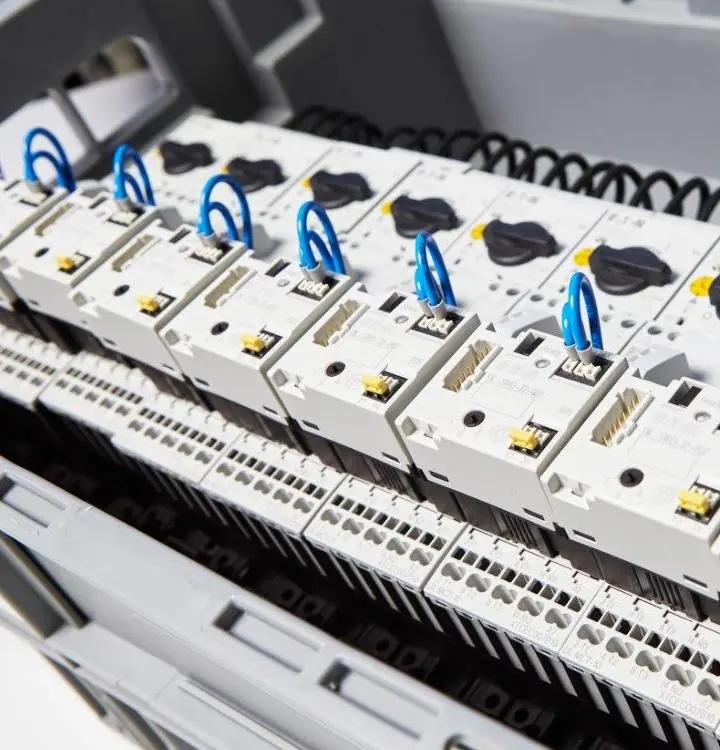
As a leading provider of circuit protection solutions, Eaton-Bussmann offers a wide range of fuse products that cater to diverse applications and industries. One crucial aspect of these fuses is the Eaton-Bussmann Fuse Current Time, which plays a vital role in ensuring the reliability and safety of electrical systems. In this article, we will delve into the product parameters, specifications, uses, and precautions of Eaton-Bussmann Fuse Current Time, providing a comprehensive solution for engineers and professionals seeking to understand and utilize these fuses effectively.
Product Parameters and Specifications
Eaton-Bussmann fuses are designed to provide high-quality overcurrent and overvoltage protection, and their current-time characteristics are carefully engineered to meet specific application requirements. The Eaton-Bussmann Fuse Current Time is typically specified in terms of its:
- Current Rating: The maximum current that the fuse can handle without melting or failing.
- Time-Delay: The time it takes for the fuse to open (clear) when an overcurrent condition occurs.
- Voltage Rating: The maximum voltage that the fuse can withstand.
- Interrupting Capacity: The fuse’s ability to interrupt an overcurrent condition without causing damage or compromising the system.
These parameters are crucial in ensuring that the fuse operates correctly and provides adequate protection for the circuit.
Uses and Applications
Eaton-Bussmann fuses are used in a wide range of applications, including:
- Power Distribution: Fuses are used to protect power distribution systems, including residential, commercial, and industrial applications.
- Industrial Control: Fuses are used to protect industrial control systems, including motor control centers, PLCs, and other control equipment.
- Telecommunications: Fuses are used to protect telecommunications equipment, including central offices, cellular base stations, and other network infrastructure.
- Transportation: Fuses are used in automotive, aerospace, and other transportation applications to protect electrical systems and ensure safe operation.
Precautions and Considerations
When using Eaton-Bussmann fuses, it is essential to consider the following precautions and guidelines:
- Proper Selection: Select fuses that match the application requirements, taking into account the current, voltage, and interrupting capacity ratings.
- Installation: Follow proper installation procedures, including ensuring that fuses are securely mounted and connected to the circuit.
- Maintenance: Regularly inspect and maintain fuses to ensure they are functioning correctly and not damaged.
- Replacement: Replace fuses that have opened or are damaged, using only genuine Eaton-Bussmann replacement fuses to ensure compatibility and reliability.
Conclusion
In conclusion, Eaton-Bussmann Fuse Current Time is a critical aspect of circuit protection solutions, ensuring the reliability and safety of electrical systems. By understanding the product parameters, specifications, uses, and precautions, engineers and professionals can effectively utilize these fuses to protect their applications and ensure optimal performance. As an authorized distributor of Eaton-Bussmann products, we offer a comprehensive range of fuse solutions, providing customers with high-quality products and expert technical support. Whether you are designing a new system or maintaining an existing one, our team is dedicated to helping you find the right fuse solution to meet your specific needs.
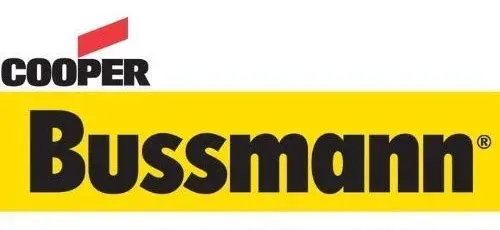
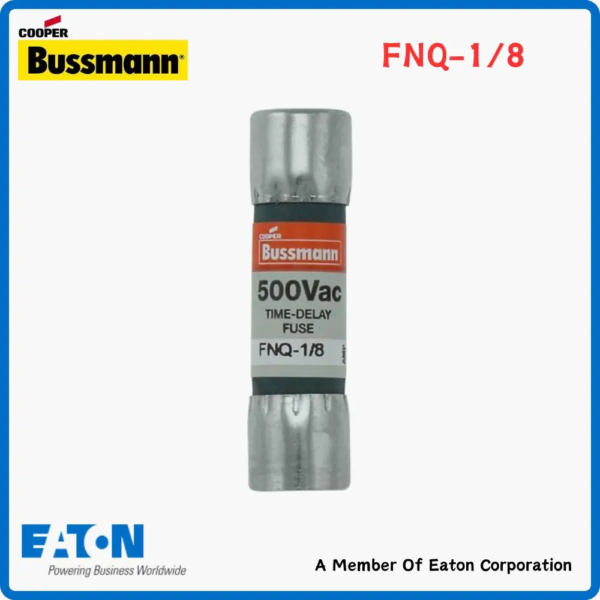
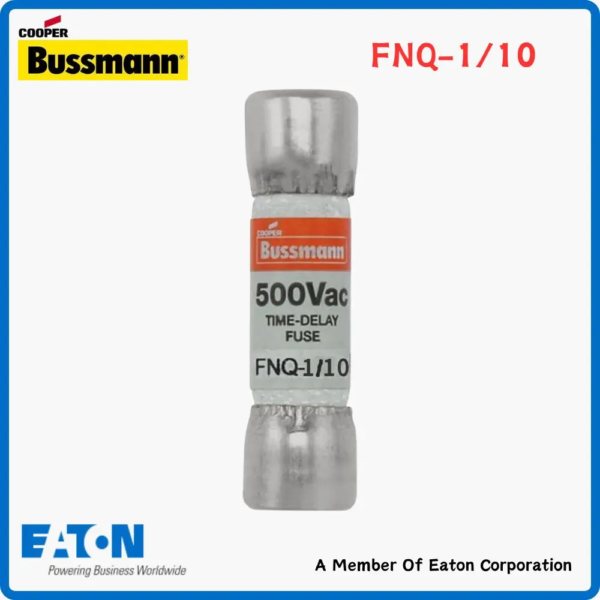

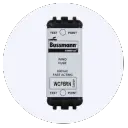 Bussmann WCF Fuses
Bussmann WCF Fuses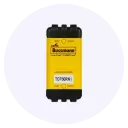 Bussmann FCF Fuses
Bussmann FCF Fuses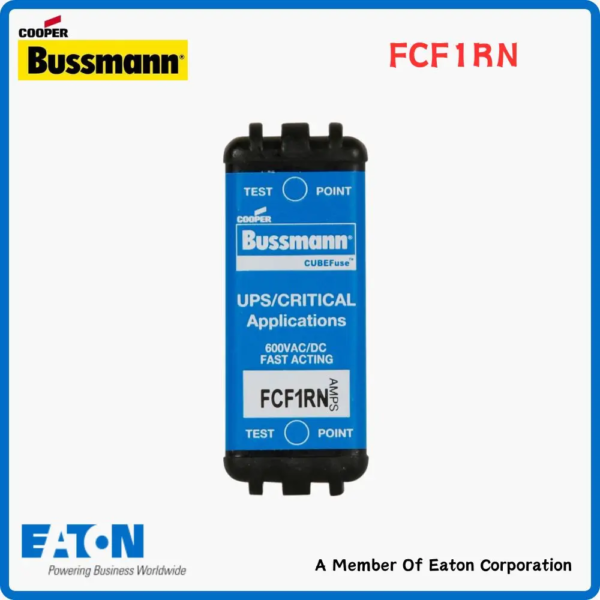
 Bussmann FRS Fuses
Bussmann FRS Fuses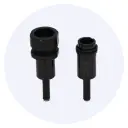 Bussmann HEB-AA Fuse
Bussmann HEB-AA Fuse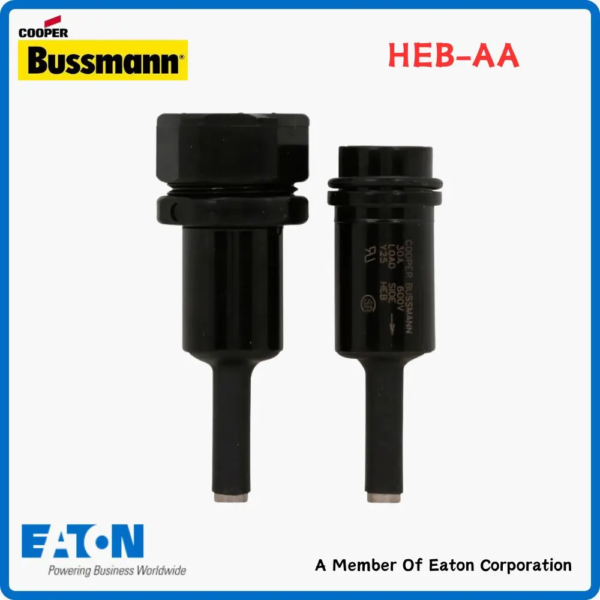
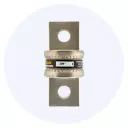 Bussmann JJN Fuses
Bussmann JJN Fuses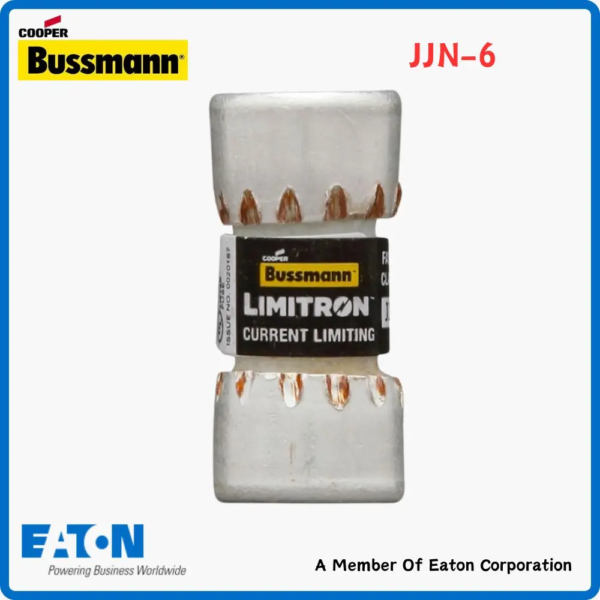
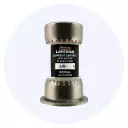 Bussmann JJS Fuses
Bussmann JJS Fuses Bussmann JKS Fuses
Bussmann JKS Fuses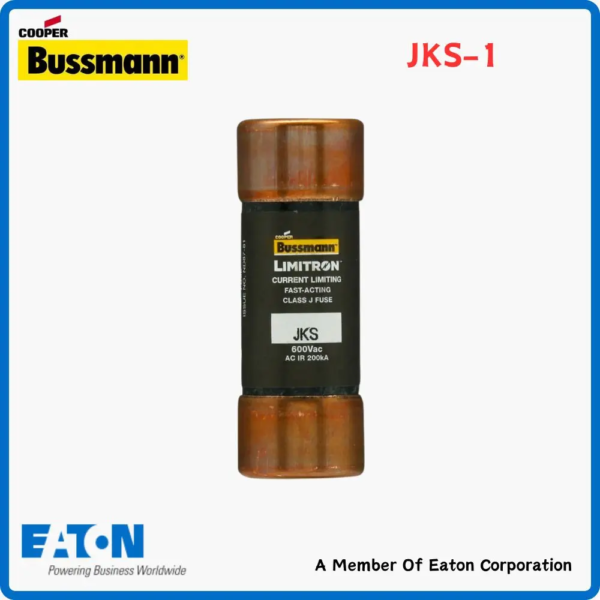
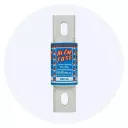 Bussmann KRP Fuses
Bussmann KRP Fuses